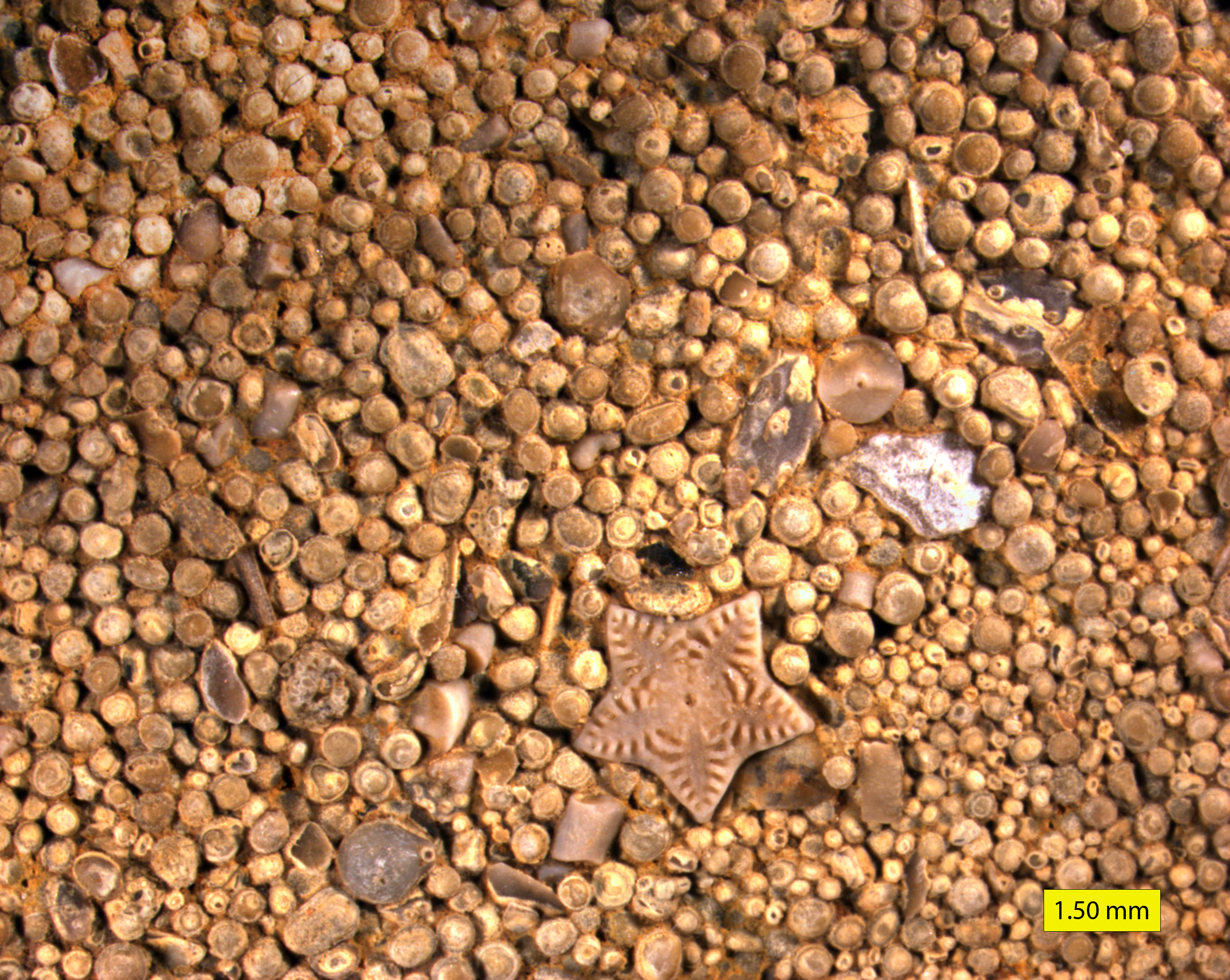|
Peloids
Peloids are allochems that are composed of micrite, irrespective of size, shape, or origin. The two primary types of peloids are pellets and intraclasts Intraclasts are irregularly shaped grains that form by syndepositional erosion of partially lithified sediment. Gravel grade material is generally composed of whole disarticulated or broken skeletal fragments together with sand grade material of wh .... Another type of peloid is pseudo-oolith.Folk, R.L. (1959) ''Practical petrographic classification of limestones.'' American Association of Petroleum Geologists Bulletin. 43, pp. 1-38.Neuendorf, K.K.E., J.P. Mehl, Jr., and J.A. Jackson, J.A., eds. (2005) ''Glossary of Geology'' (5th ed.). Alexandria, Virginia, American Geological Institute. 779 pp. Scholle, P.A., and D.S. Ulmer-Scholle (2003) ''A Color Guide to the Petrography of Carbonate Rocks: Grains, textures, porosity, diagenesis. '' American Association of Petroleum Geologists Memoir no. 77. Tulsa, Oklahoma, American Associati ... [...More Info...] [...Related Items...] OR: [Wikipedia] [Google] [Baidu] |
Pellets (petrology)
Pellets are small spherical to ovoid or rod-shaped grains that are common component of many limestones. They are typically 0.03 to 0.3 mm long and composed of carbonate mud (micrite). Their most common size is 0.04 to 0.08 mm. Pellets typically lack any internal structure and are remarkably uniform in size and shape in any single limestone sample. They consist either of aggregated carbonate mud, precipitated calcium carbonate, or a mixture of both. They either are or were composed either of aragonite, calcite, or a mixture of both. Also, pellets composed of either glauconite or phosphorite are common in marine sedimentary rocks. Pellets occur in Precambrian through Phanerozoic strata. They are an important component mainly in Phanerozoic strata. The consensus among sedimentologists and petrographers is that pellets are the fecal products of invertebrate organisms because of their constant size, shape, and extra-high content of organic matter.Folk, R.L. (1959) ''Prac ... [...More Info...] [...Related Items...] OR: [Wikipedia] [Google] [Baidu] |
Micrite
Micrite is a limestone constituent formed of calcareous particles ranging in diameter up to four μm formed by the recrystallization of lime mud. Flügel, Erik, ''Microfacies of Carbonate Rocks: Analysis, Interpretation and Application,'' Springer, pp 74-94, 2004 The term was coined in 1959 by Robert Folk for his carbonate rock classification system. Micrite is derived from MICRocrystalline calcITE. In the Folk classification micrite is a carbonate rock dominated by fine-grained calcite. Carbonate rocks that contain fine-grained calcite in addition to allochems are named ''intramicrite'', ''oomicrite'', ''biomicrite'' or ''pelmicrite'' under the Folk classification depending on the dominant allochem. Micrite is lime mud, carbonate of mud grade. Micrite as a component of carbonate rocks can occur as a matrix, as micrite envelopes around allochems or as peloids Peloids are allochems that are composed of micrite, irrespective of size, shape, or origin. The two primary types of ... [...More Info...] [...Related Items...] OR: [Wikipedia] [Google] [Baidu] |
Allochem
Allochem is a term introduced by FolkFolk, R. L. (1959) ''Practical petrographic classification of limestones.'' American Association of Petroleum Geologists Bulletin. 43, pp. 1–38. to describe the recognisable "grains" in carbonate rocks. Any fragment from around 0.5 mm upwards in size may be considered an allochem. Examples would include ooids, peloids, oncolites, pellets, fossil or pre-existing carbonate fragments. Fragments are still termed allochems if they have undergone chemical transformations – for example if an aragonite shell were to dissolve and be later replaced by calcite, the replacement would still be deemed an allochem.Scholle, P. A., and D. S. Ulmer-Scholle (2003) ''A Color Guide to the Petrography of Carbonate Rocks: Grains, textures, porosity, diagenesis''. American Association of Petroleum Geologists Memoir no. 77. Tulsa, Oklahoma, American Association of Petroleum Geologists. 474 pp. The allochems are typically embedded in a matrix of micrite Micrite is ... [...More Info...] [...Related Items...] OR: [Wikipedia] [Google] [Baidu] |
Intraclasts
Intraclasts are irregularly shaped grains that form by syndepositional erosion of partially lithified sediment. Gravel grade material is generally composed of whole disarticulated or broken skeletal fragments together with sand grade material of whole, disaggregated and broken skeletal debris. Such sediments can contain fragments of early cemented limestones of local origin which are known as intraclasts. The sediments that contain fragments of early cemented limestones of extra-basinal origin are called extraclasts. Examples of intraclasts include mudlumps that are torn up from the bottoms of lagoons during storms, hardened desiccated mudflakes produced in intertidal and supratidal environments and fragments broken from cemented deep-sea crusts. Other intraclasts are aggregates of carbonate particles. These include grapestones and botryoidal A botryoidal ( ) texture or mineral habit, is one in which the mineral has an external form composed of many rounded segments, named for ... [...More Info...] [...Related Items...] OR: [Wikipedia] [Google] [Baidu] |


